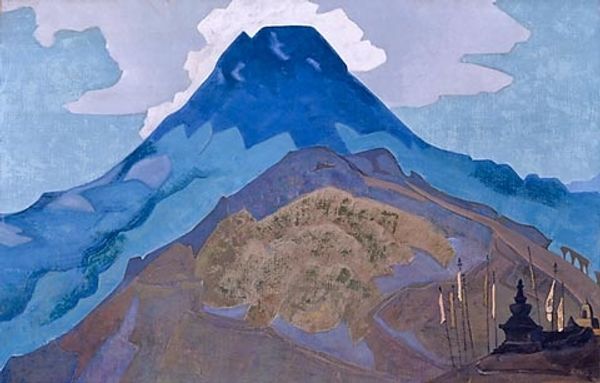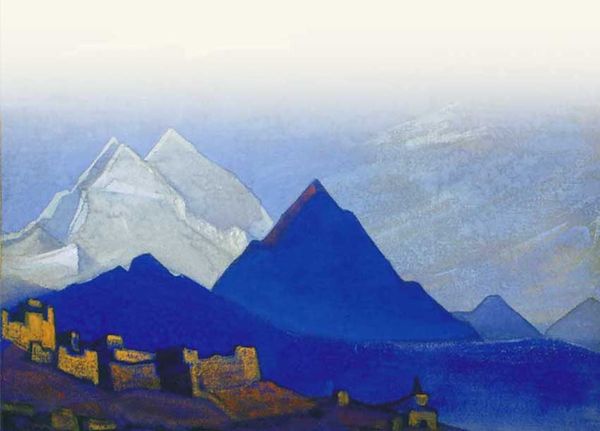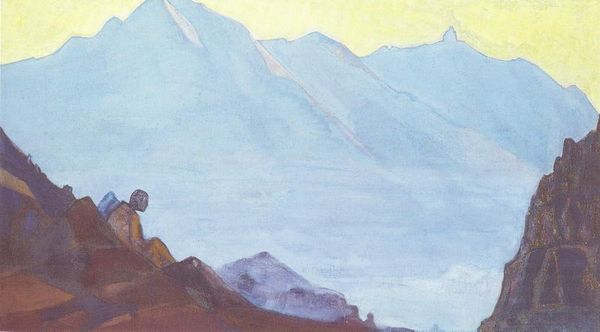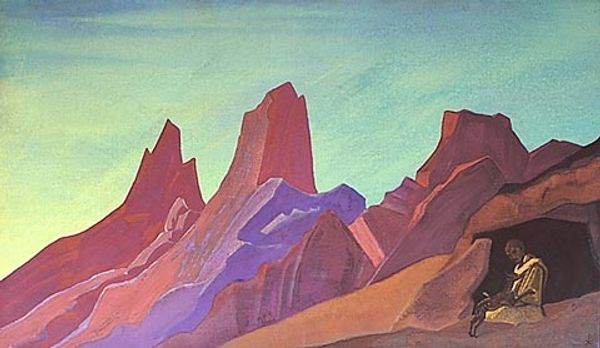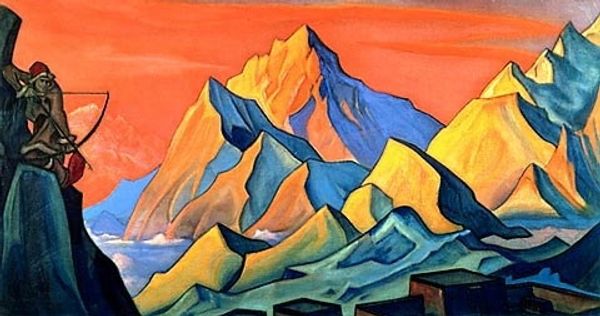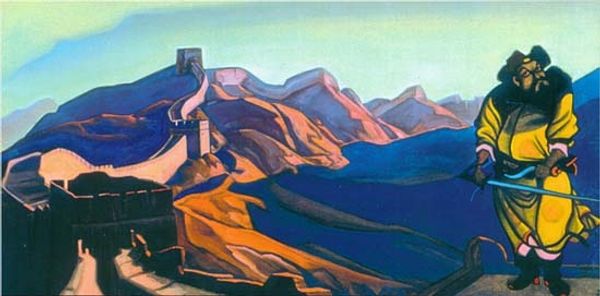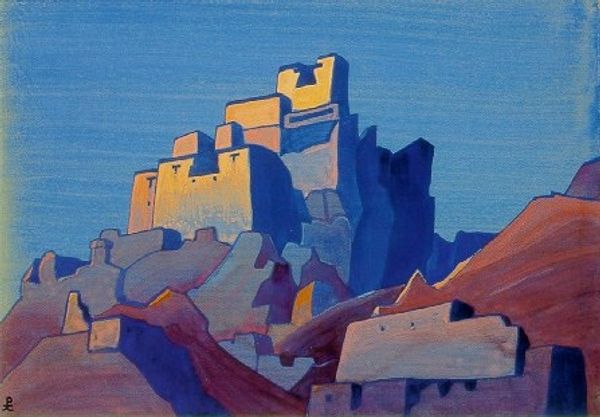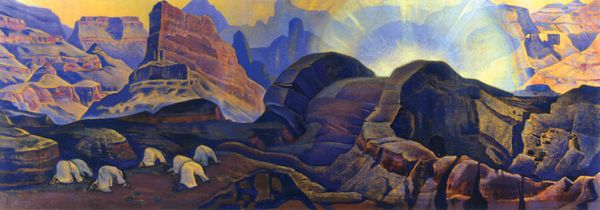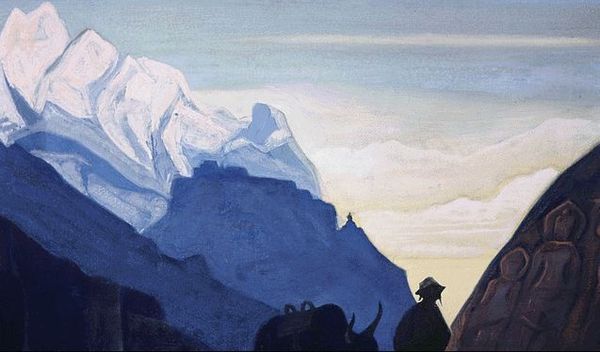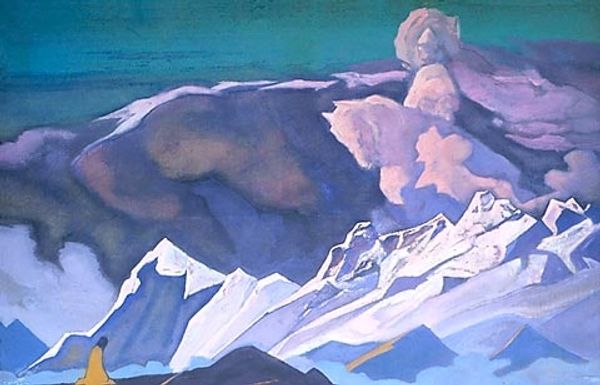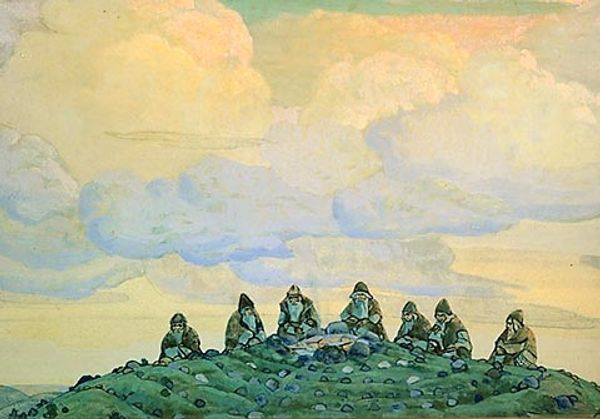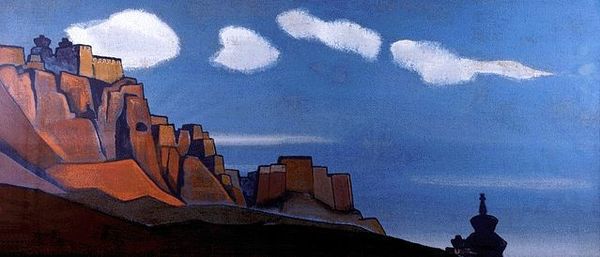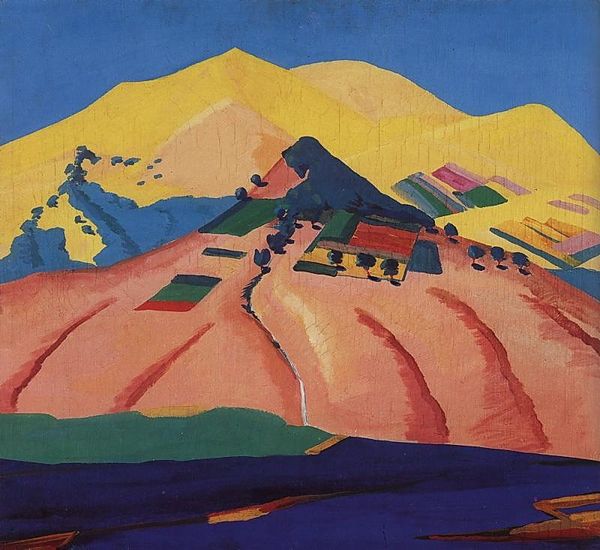
Copyright: Public domain
Editor: This is Nicholas Roerich's "Tashiding," painted in 1924 using oil paint. The cool blues give the mountain an almost ethereal, otherworldly feel. What do you see in this piece beyond the immediate landscape? Curator: I see a potent commentary on cultural identity and the impact of colonialism on indigenous spiritual practices. Roerich was deeply invested in Eastern philosophies and, despite his Russian background, advocated for the preservation of Tibetan culture. This painting, made during a period of intense geopolitical maneuvering in Central Asia, presents the mountain as both a sacred space and a symbol of cultural resilience against external forces. How do you think the symbolism contributes to this narrative? Editor: I hadn't really considered that perspective. I was initially drawn to the almost dreamlike quality, but knowing about Roerich’s interest in Eastern philosophies does shift things. The mountain almost becomes a silent protest, or a spiritual anchor. Curator: Exactly! Think about the placement of the figures – dwarfed by the mountain, yet present. What statement might Roerich be making about humanity’s relationship to something greater than ourselves? Considering his background within the Russian Avant-Garde movement, do you feel the painting represents a rejection of certain Western values or perhaps a reframing? Editor: That makes me think about how art can be a powerful means to promote social change. Perhaps the spiritual, serene portrayal counters destructive outside influences through quiet persistence. This piece made me realize how essential it is to consider socio-political backgrounds while experiencing the painting. Curator: Precisely. And understanding those complex dynamics helps us engage more fully with art and culture. We are prompted to expand our worldview. Editor: Thank you for sharing!
Comments
No comments
Be the first to comment and join the conversation on the ultimate creative platform.
